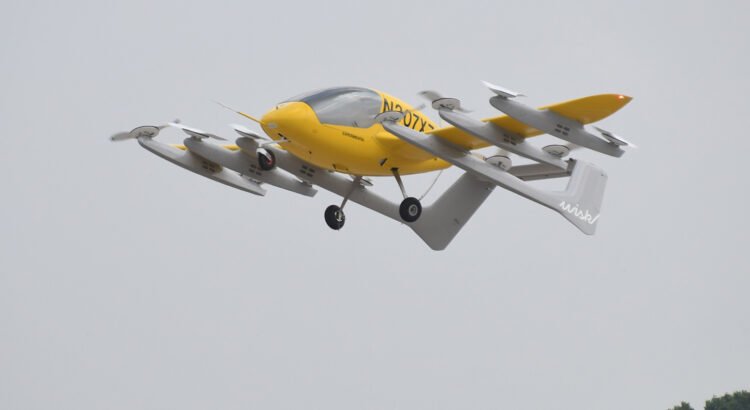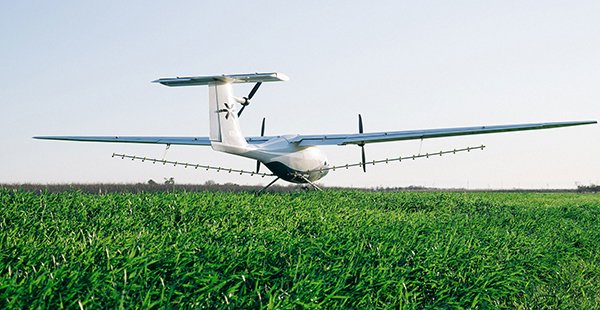The Virginia Innovation Partnership Corporation (VIPC) and the Virginia Department of Aviation (DOAV) have announced the launch of the Commonwealth of Virginia’s Advanced Air Mobility Test Site Program, a new pilot initiative to evaluate and integrate next-generation aviation technologies across Virginia’s transportation and innovation ecosystem. Developed to support the deployment of unmanned aircraft systems (UAS), […]
AAM/UAM
Aviation Roadmap Takes Kansas Transportation to the Next Level
After unveiling the Kansas Advanced Air Mobility (AAM) Roadmap on Sept. 18 in Wichita, the Kansas Department of Transportation’s Division of Aviation, Kansas Department of Commerce and other aviation industry stakeholders are ready to create new ways to enhance mobility, drive economic growth, expand access to multimodal transportation and more across the state. The roadmap […]
Wisk and Signature Aviation Partner to Accelerate Autonomous Advanced Air Mobility Infrastructure
Wisk Aero and Signature Aviation have announced the signing of a Memorandum of Understanding (MOU). This partnership marks a significant step forward to proactively develop the infrastructure and operational framework for integrating autonomous Advanced Air Mobility (AAM) operations across Signature Aviation’s global network. This network includes locations in Wisk’s U.S. launch markets: Houston, Los Angeles, […]
State of Ohio Welcomes BETA Technologies’ Aircraft
Last week the state of Ohio welcomed BETA Technologies, an aerospace company manufacturing electric aircraft and infrastructure, to complete a flight demonstration with their ALIA CTOL aircraft at The Ohio State University’s airport. The event, which included top government, aerospace, defense, and industry leaders from across Ohio — and was hosted by JobsOhio — showcased […]
World’s Longest-Running Electric Aircraft Symposium Returns to Oshkosh, Wisconsin in July
Dozens of the world’s leading electric aircraft developers and technology experts will be speaking at the 19th Annual Electric Aircraft Symposium (EAS), hosted by the Vertical Flight Society (VFS). This exciting event will once again be held online and in person in Oshkosh, Wisconsin, on July 19–20, 2025. The annual symposium is held on the […]
NBAA Welcomes Five-Country Partnership to Collaborate on Global Advanced Air Mobility Growth
The National Business Aviation Association (NBAA) today welcomed a new, U.S.-led partnership with Australia, Canada, New Zealand and the UK to coordinate as the countries take steps to integrate advanced air mobility (AAM) into their aviation systems. Department of Transportation Secretary Sean Duffy and acting Federal Aviation Administration (FAA) Administrator Chris Rocheleau joined other government […]
U.S. Transportation Secretary Sean P. Duffy and U.S. Sen. Ted Cruz Announce Texas A&M Will Lead the Center for Advanced Aviation Technologies
U.S. Transportation Secretary Sean P. Duffy and U.S. Senator Ted Cruz (R-TX) announced that Texas A&M University System (TAMUS) will be the managing entity to establish and operate the Federal Aviation Administration (FAA)’s Center for Advanced Aviation Technologies (CAAT). “Texas is the perfect place for our new Center for Advanced Aviation Technologies. Under Senator Cruz’s […]
The Future of Air Mobility Takes Flight in Utah
Utah’s first air taxi demonstrations began Monday at the Salt Lake International Airport just weeks after 47G | Utah Aerospace & Defense (47G) signed a historic agreement with industry-leading electric aerospace company BETA Technologies. Supported by the Utah Department of Transportation (UDOT) and the Governor’s Office of Economic Opportunity (GOEO), the agreement creates a game-changing […]
Pyka Unveils Pelican 2: The World’s Largest Autonomous Crop Protection Aircraft
Pyka unveiled its next-generation agricultural spray aircraft, Pelican 2, which features an expanded 300-liter payload and a work rate of up to 90 hectares per hour. Pelican 2 is the world’s largest and most productive autonomous electric agricultural aircraft. Pyka has secured FAA authorization for commercial operation of Pelican 2 in the United States, making […]
State of Oklahoma Launches First Investment in Advanced Air Mobility Infrastructure
The Oklahoma Department of Aerospace and Aeronautics (ODAA) has completed the selection process and executed a contract for the state’s first investment in an airspace management system and automatic detect-and-avoid solution to support both drone flights and the rapidly emerging Advanced Air Mobility (AAM) industry. ODAA has selected Vigilant Aerospace, a local company based in […]




